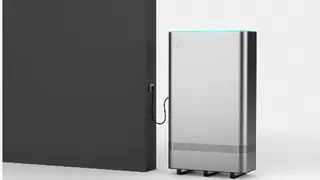It is often claimed that solar panels generating solar energy need zero-maintenance.
But that is not entirely true. Photovoltaic modules need regular cleaning so that the dust that accumulates on them is removed — to increase their efficiency and lifecycle, besides generating optimal electricity. And it was this niche function, of cleaning solar modules, that engrossed Neeraj Kumar during his college days in IIT Jodhpur where he was learning the nuances of renewable energy.
On closer study, he found that the efficiency of a solar panel depends on the weather, topography and dust levels. For instance, if not cleaned every fortnight, the efficacy of the panel reduces by 12 to 15 per cent in Rajasthan, 10 to 12 per cent in South India and up to 25 per cent if not cleaned at all.
This egged Kumar on to design a solar cleaning robot that uses artificial intelligence and moves seamlessly over the arrays of panels, cleaning them and improving their generating capacity. No longer would solar plants need to hire a battery of personnel armed with distilled water or solar cleaning kits to do the job. In technical parlance, the dirt on the panel is known as soiling and the loss of power associated with this factor is known as soiling loss. This soil accumulation hampers solar irradiance passing into the module.
Kumar’s desire to create such a contraption and turn it into a business model achieved fruition when he caught up with his neighbour Manish Das, who had made a colour-sensing robot during his college days. Since then, Das had picked up experience in sales marketing and business development in companies such as Godrej, Hilti, and Snapdeal. In 2017, Kumar and Das founded Skilancer Solar, a start-up which, in four years, has 10 large projects under its belt and is all set to open an office in Qatar, Doha.

It took the partners over a year to test their first prototype, and with the help of their mentor, Dhruv Maheswari, they set up a facility to manufacture cleaning robots for two-metre, four-metre and six-metre panels. Today, they have capacity to produce 300 robots per month.
“One robot can clean up to a 200 kW capacity plant or a kilometre in length. It pays back the plant in a matter of 24 months as there is no operational cost and no water use,” says Kumar, explaining that typically a 1-MW plant would have around 3,500 photovoltaic panels and to clean each panel takes two litres of water, hence 7.000 litres of water is used per cleaning cycle. The robot uses none.
Das, who takes care of operations and investor relations, details how the robot has been built to function: “The system uses a motorised brush to clean the surface of the panel array. It is moved along the panel by two sets of motorised wheels, with one set located at either end of the device. The entire system is driven by a compact, high-torque DC motor and controlled by an onboard microcontroller paired with a dedicated motor controller. This control system is able to fully automate the system’s cleaning process with the ability to schedule cleaning at any given time.” The robot is built to have a 15-year lifespan, with preventive maintenance after five years. “If there is too much wear and tear, the wheels and brush can be replaced after 3-5 years,” says Kumar, who looks after R&D, installations and manufacturing, at the company.
Intelligent customisation
What is interesting is that the robot’s machine-learning factor enables it to learn the pattern of the plant where it is fixed. It senses temperature and humidity and works accordingly, finding by itself the optimal cleaning cycle.
Skilancer Solar received substantial venture capitalist funding in the beginning of the year and hopes to use it to expand its verticals. “We have been servicing large plants, but will now also start on rooftop solar and cleaning building facades. We see huge opportunity in the West Asian market, with an office in Qatar we soon hope to tap that massive scope.”








Comments
Comments have to be in English, and in full sentences. They cannot be abusive or personal. Please abide by our community guidelines for posting your comments.
We have migrated to a new commenting platform. If you are already a registered user of TheHindu Businessline and logged in, you may continue to engage with our articles. If you do not have an account please register and login to post comments. Users can access their older comments by logging into their accounts on Vuukle.